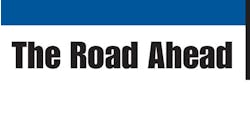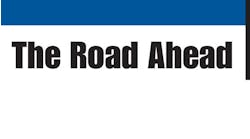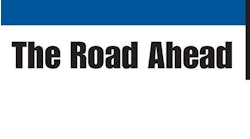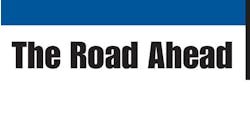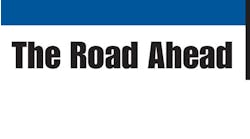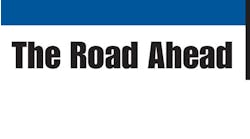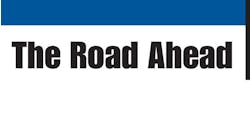Dr Albert Bates is a financial wizard. His presentations with income statements, balance sheets, and relationships between gross margins, expenses, return on assets, and sales growth can be overwhelming. But his message to NTEA member distributors is simple: If you want to improve profits, you have to reduce expenses.
Bates summarized four issues that distributors must address if they want to stay in business:
-
Profitability has deteriorated somewhat in recent years, largely due to a decline in sales volume and an accompanying increase in operating expense percentage.
-
Major improvements are needed in the personnel productivity ratio (the percent of each gross margin dollar that must be devoted to payroll), and modest improvements are needed in other expenses.
-
Making expense improvements requires internal actions as well as working with customers and suppliers.
-
Minor changes are needed in gross margin and inventory turnover.
“We hope the economy will improve sales, but the increase in expenses is our [distributors] fault,” said Bates, president, Profit Planning Group. “Gross margins improved somewhat between 1999 and 2000, but expenses have been moving north every year. Is it the customers' fault? Is it the suppliers' fault? Who do we blame? The big problem is the expense side of the business. Distributors have not been able to manage expenses effectively.”
Bates' company, Profit Planning Group, conducts an annual profitability survey of NTEA distributor members. According to the most recent survey, the median distributor had net sales of $5 million and a gross margin of $1,175,000 (23.5%) during 2002. Half the distributors did better. Half did worse.
Total assets were $1.5 million. Profit before taxes were $75,000. Return on assets, or the percentage that represents total investment in the business, equals profit before taxes divided by total assets. In this example that equals 5%.
“The typical distributor buys things for 76.5 cents, sells them for $1, and keeps 23.5 cents for each transaction,” he said. “His pre-tax return on total capital commitment is only 5%. That percentage is dangerously low. The recent trend in return on assets has been 7% in 1999, 6% in 2000, and 5% in 2001. That declining line represents survival. If we aren't producing at least a 5% return on assets, wouldn't we be better off liquidating our business and doing something else with our lives?
“This industry needs more profit. When we go into a recession, the numbers are terrible. When we come out of a recession, the numbers are just ok. We only made a 7% return on assets during a year of 8.5% sales growth in 1999. So we squandered a great opportunity.”
Profit solutions
His mandate to distributors each year for the next five years is increase sales 5% and gross margin .2%, reduce personnel productivity ratio 1% and other expenses 0.2%, increase inventory turnover by only .1%, and no change in collection time for accounts receivable. Decreasing the collection period causes very little change in return on assets.
Based on the income statement and balance sheet that represents the median NTEA distributor, the achieved objectives above will increase return on assets from 5% to 6.9% in one year, Bates said.
The first step in improving profits is to reduce personnel productivity ratio. Total expenses, which include interest, are divided into two categories — payroll and fringe benefits and all other expenses. Payroll ($625,000) divided by gross margin ($1,175,000) equals 53.2%.
“For every dollar of gross margin that we generate, 53 cents goes to payroll and fringe benefits, and that number is too high,” he said. “We need to lower PPR by one percent each year for the next five years to keep more of the value that we provide to our customers.
“There is an incredibly strong relationship in the truck equipment distribution industry between PPR reduction and return on assets. By reducing PPR 1% each year over five years, you can increase return on assets to 9%.”
Bates then illustrated how PPR can be improved under three different economic scenarios of rapid growth, moderate growth, and zero growth. In each example, gross margin is locked at 23.5%. The only variables are sales and expenses.
In the best of all worlds, consider an example of rapid growth resulting in a sales increase of 10%. “The company needs another employee in the warehouse, so the solution is to hire someone,” he said. “We need to upgrade our software system. No problem. Payroll has increased by $50,000, but we can still trim PPR by 1% and other expenses by .2% of sales.”
Under the moderate growth plan, the company can't spend as much because sales have grown only 5%. Payroll and fringes increase 3%. All other expenses rise 2.8%. “This time, if we need another employee in the warehouse, we schedule employees more efficiently,” he said. “Regarding a new computer system, the old software is good enough.”
The solution to the no sales growth scenario is downsizing. “This example is vile, disgusting, and filthy, but a lot more profitable,” he said. “It is possible to make money in a flat, no-growth economy if you lower PPR by 1% and other expenses by .2% of sales. Sales solves a lot of problems, but you still control your PPR and other expenses.”
Firing customers
Customers also impact the profitability of a business. Because there is no NTEA data, Bates used numbers representing four categories of customers that are applicable to the typical distribution business in general. The first 15% of the total customer base produce 100% of the profits. Another 15% produce 35% while 35% only produce 10% of the profit. However, the final 35% of customers cost the business 45% of its profit.
“More than a third of your customers are costing you 45% of your profits,” Bates said. “Some of those customers should be fired, and you probably already know who they are.”
Customers can impact a company's profitability five ways: (1) Inadequate gross margin. “For whatever reason, this customer buys at a lower gross margin than other customers,” he said. “He may buy a lot of stuff, but he doesn't pay me much.”
(2) Inadequate sales volume (3) Excessive cost of servicing the account. Lots of small orders, special deliveries, returns, and large purchases of specialty items will eat up a company's profit. (4) Excessive sales costs are the result of sales staff having to spend an inordinate amount of time with the customer. (5) Slow payment practices can result in overburdened accounts receivable.
“If you have a customer who has low gross margin, low sales, eats up lots of your time, keeps your sales force busy, and rewards you by not paying on time, I think you have the classic ‘fire the customer’ situation. Customers and vendors don't set out to be unprofitable. It is the nature of the relationship that we have created with them.”
According to Bates' percentage mix of vendors to profits, vendor relationships are more balanced. Among the four categories of vendors, only 20% lose money for distributors — 10% of the profits. The remaining 80% are profitable. However, vendors can hurt a company's profitability if there is:
- inadequate gross margin or excessive expenses
- inadequate sales volume
- excessive number of items in the line
Fragile profit
Based on the NTEA survey, the typical distributor has $5,000,000 in net sales — 2,500 invoice orders at $2,000 per order. The average invoice has four lines at $500 for each line. With a gross margin of $1,175,000, and $1,100,00 in total expenses, total profit before taxes equals $75,000. So profit before taxes is only $30 per order or $7.50 per line.
“A profit of $30 per order is very fragile,” Bates said. “If we make one mistake on an order, we have lost all the profit.”
If the median NTEA distributor company follows the mandates of increasing sales 5% and gross margin .2%, decreasing PPR 1% and other expenses .2%, the profit before taxes per order will increase from $30 to $48.18 per order — a company profit increase of $45,000.
“When we get our economics right, we can change the business,” he said.
